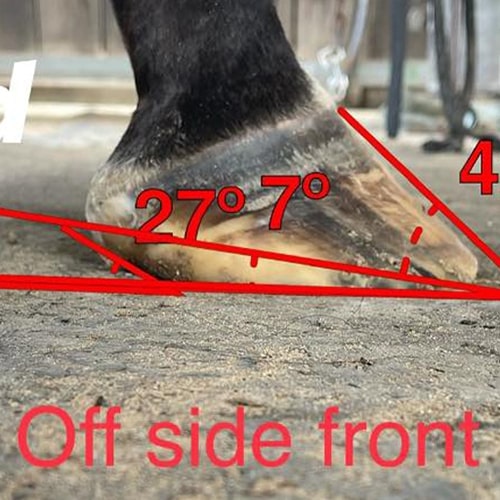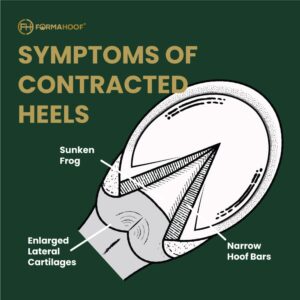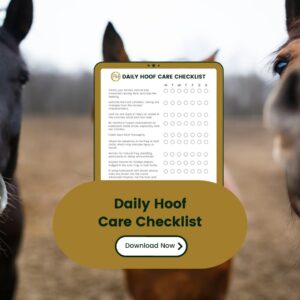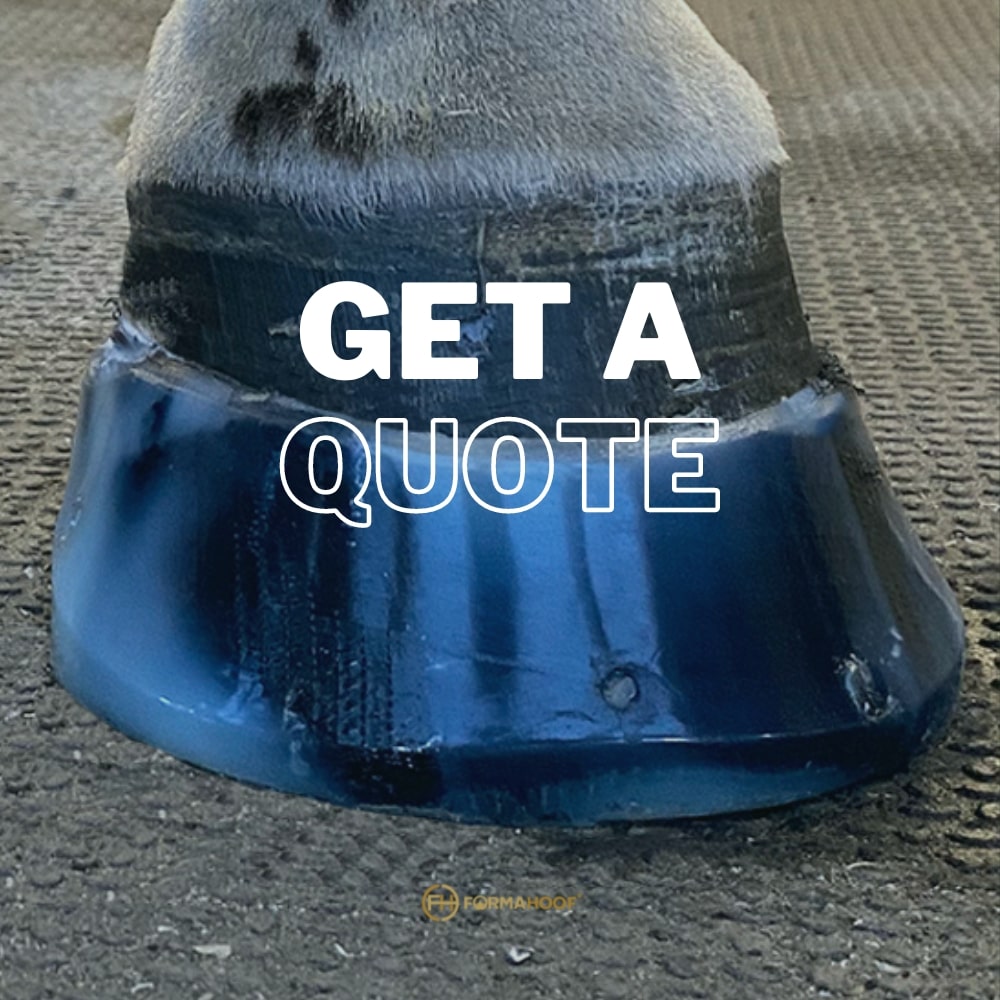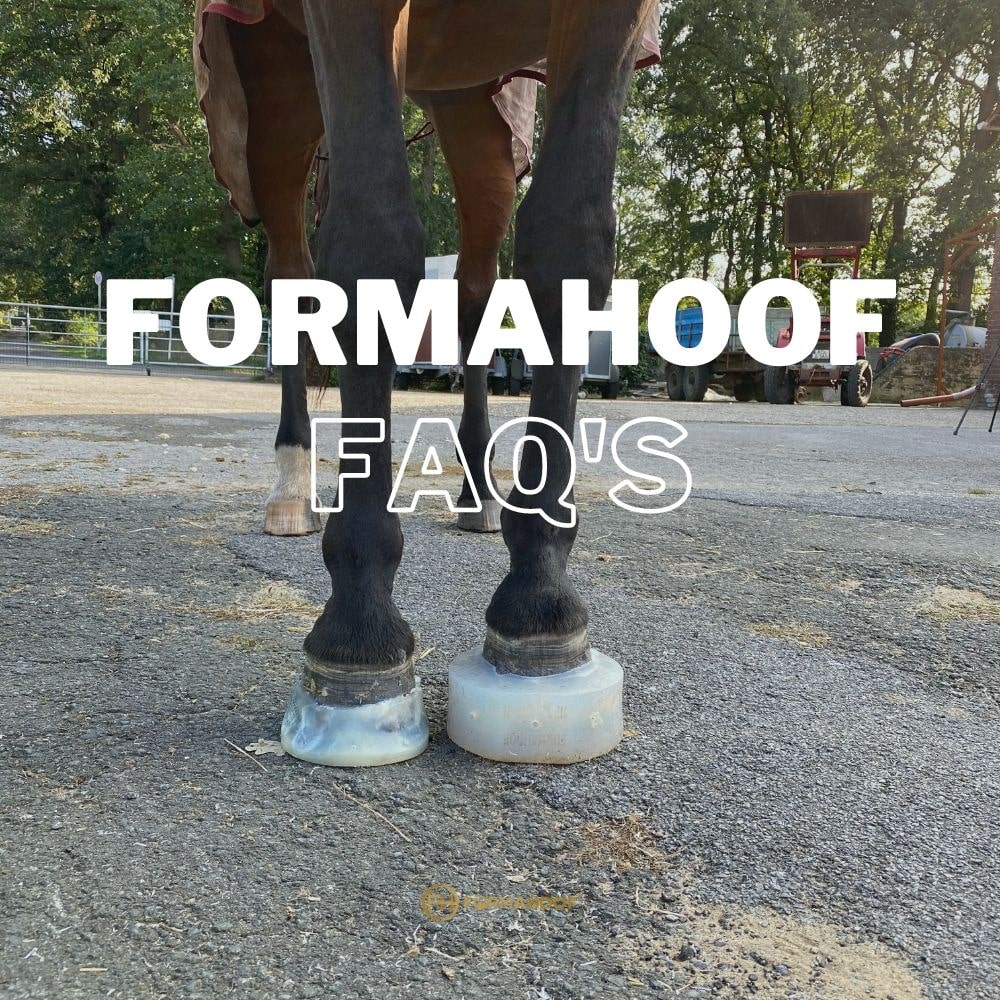When it comes to the nuanced care of Thoroughbred horses, both on and off the track, hoof health emerges as a paramount concern. Notorious for their sensitive feet, Thoroughbreds (TBs), particularly those transitioning from racing (Off-the-Track Thoroughbreds or OTTBs), encounter distinctive hoof problems like conformation faults, collapsed heels, and thin soles, often referred to as “flat tires.”
Navigating through these issues, specialists, farriers, and veterinarians have sought solutions that provide both comfort and structural support. Here, we delve into FormaHoof, a pioneering solution in thoroughbred hoof care, informed by insights from expert racehorse farrier, Sven Targett.
Challenges in Thoroughbred Hoof Care
Sven Targett, with 15 years of expertise as a farrier, primarily working with thoroughbred racehorses, articulates a notable challenge faced post-racing career: dealing with flat, crushed heels which lead to negative palmer/planter angles and a breakdown in foot functionality.
“We have had multiple horses finish their racing careers with flat, crushed heels, leading to a complete breakdown in how their feet function“
Sven Targett
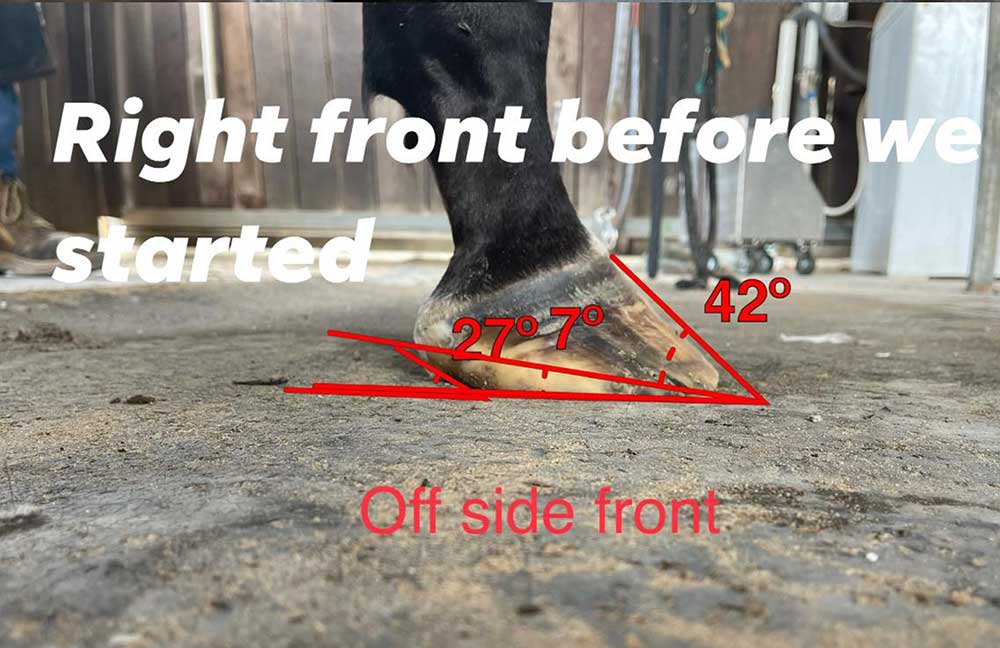

Thoroughbreds, while splendid runners, are often privy to hoof issues, largely emanating from the intense pressure their lower limbs are subjected to. Running at high speeds on racetracks, which are often hard surfaces, amplifies the stress exerted on their hooves and legs, doesn’t it? And, when you pair this with their innate conformational predispositions such as thin hoof walls and flat feet, we’re looking at a genuine conundrum.
Striding Ahead: Addressing Track-Related Hoof Issues
Our equine athletes require a diligent hoof care regime to combat the physical strain induced by racing. This involves regular check-ups with farriers, corrective shoeing techniques, and scrutiny by veterinarians to pre-emptively address arising issues. “Prevention is better than cure,” as the adage goes, is fundamentally pertinent in managing these on-track thoroughbreds, don’t you think?
Introducing FormaHoof: A Technological Advancement in Hoof Care
FormaHoof, with its non-invasive and rehabilitative approach, allows farriers to effectively and consistently reshape horse’s feet they are working with, enhancing comfort and potentially facilitating a fruitful second riding career after racing. Sven notes:
“FormaHoof gives us an effective and consistent solution to get their feet back in shape, increasing their comfort and often helping them to go on and enjoy a second riding career after racing.“
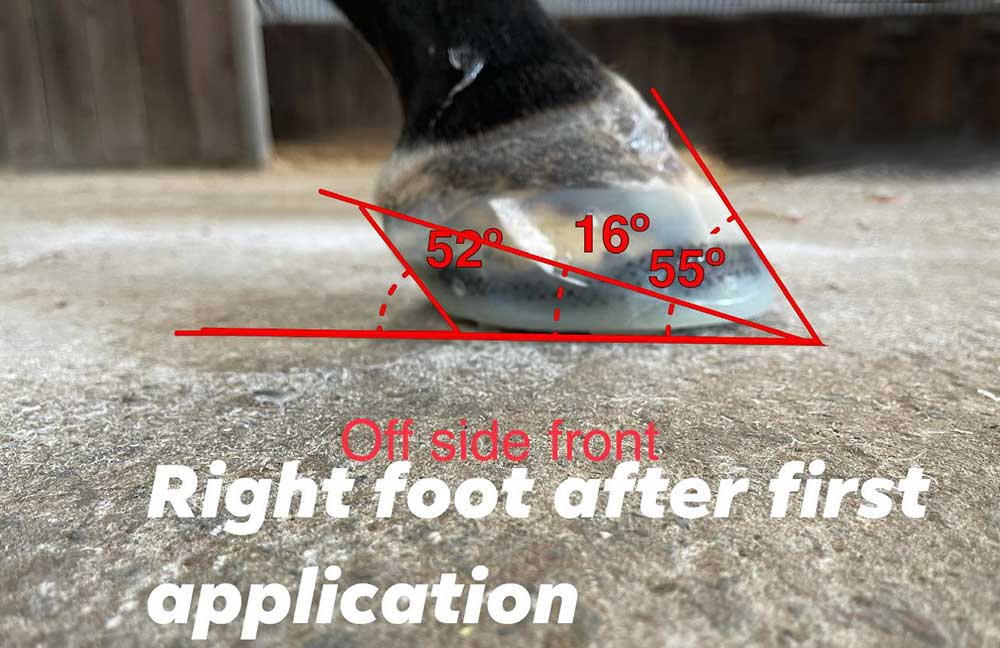

The Economics of FormaHoof
Addressing concerns about cost, Sven explains that while FormaHoof might seem like a pricier option upfront, it yields significant long-term financial savings by literally halving the shoeing cost over the rest of the working life of an OTTB.
Unleashing Multiple Benefits with FormaHoof
FormaHoof isn’t just about structural adjustment; its impact is multifaceted. Sven illustrates how it aids in:
- Realigning the bony column
- Enhancing blood supply to the foot
- Re-growing the heel structure
- Facilitating suspension system recovery
Moreover, it allows for adjustments while keeping the horses in work, offering a unique advantage in maintaining training schedules. Sven provides a testament:
“We now have many of our thoroughbred horses being managed in FormaHoof, both horses currently racing and some retired from racing. I’m thrilled to be able to make changes in their heel structure, bony column re-alignment, sole depth, and overall posture with the FormaHoof system.“
A Revolutionary Approach to Rehabilitation
FormaHoof doesn’t just offer a temporary solution; it guides hooves through a rehabilitative journey. It may serve as a transitional phase, helping horses recover from previous challenges, building up sole depth, healthy walls, and heels, and potentially facilitating a transition to barefoot or become the regular shoeing option.
Stepping into FormaHoof: Tips from the Expert
Navigating the learning curve of a FormaHoof application, Sven emphasizes the value of the training modules provided by FormaHoof. For those eager to venture into this transformative hoof care journey, he advises:
“Make sure you give your farrier access to the training. FormaHoof is a real game-changer in the way that we can approach our rehabilitation plans, helping these wonderful equine athletes to live long and productive lives after racing.“
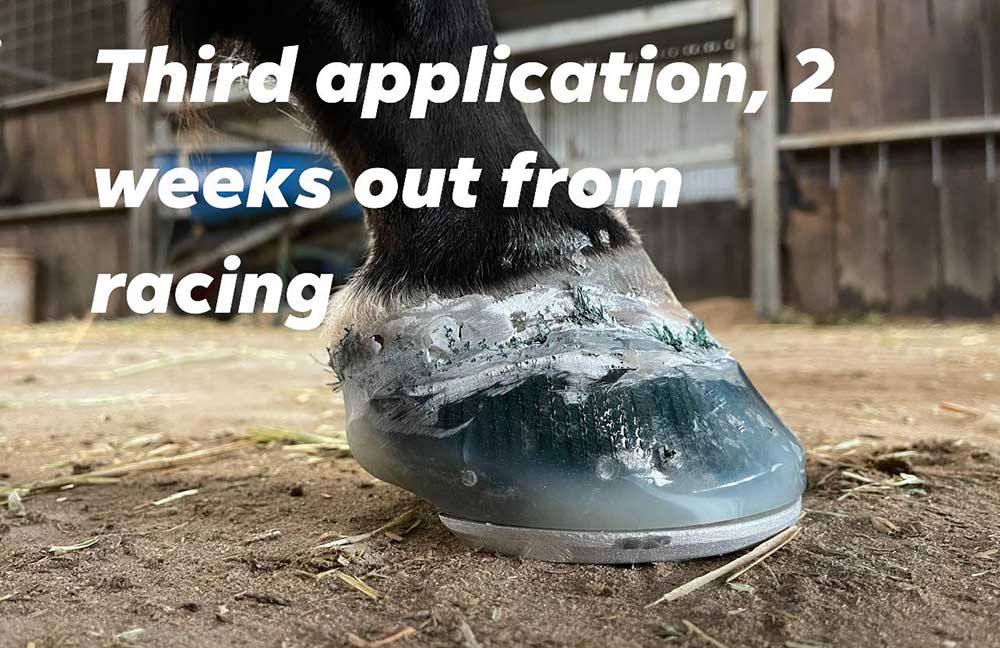

Harnessing the Potential of FormaHoof: A Success Story
In a tangible illustration of FormaHoof’s efficacy, a mare recently experienced her third application of the FormaHoof hoof care system, coinciding with her inaugural track gallop at the Larkhill complex. Prior to this, her intensive work took place at home, on a notably heavy track, navigating through the strains and stresses that come with such conditions.
Expressing palpable enthusiasm, Sven shares:
“The transformation witnessed in this mare’s hooves has been nothing short of remarkable. There’s observable new growth in her heels, and the adjustments in angles signify a positive trajectory in her hoof health.“
This care plan is anticipated to fortify her soundness throughout the upcoming race preparations. The strategic plan ahead involves reverting back to conventional shoes a week prior to racing, after leveraging the supportive benefits of FormaHoof during her recovery and training phases.
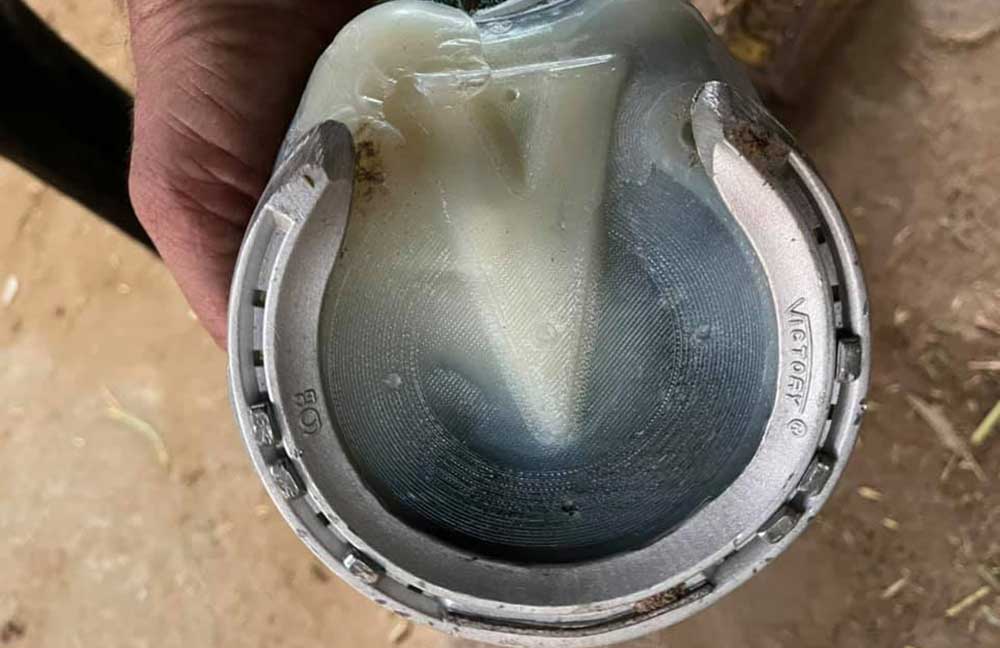

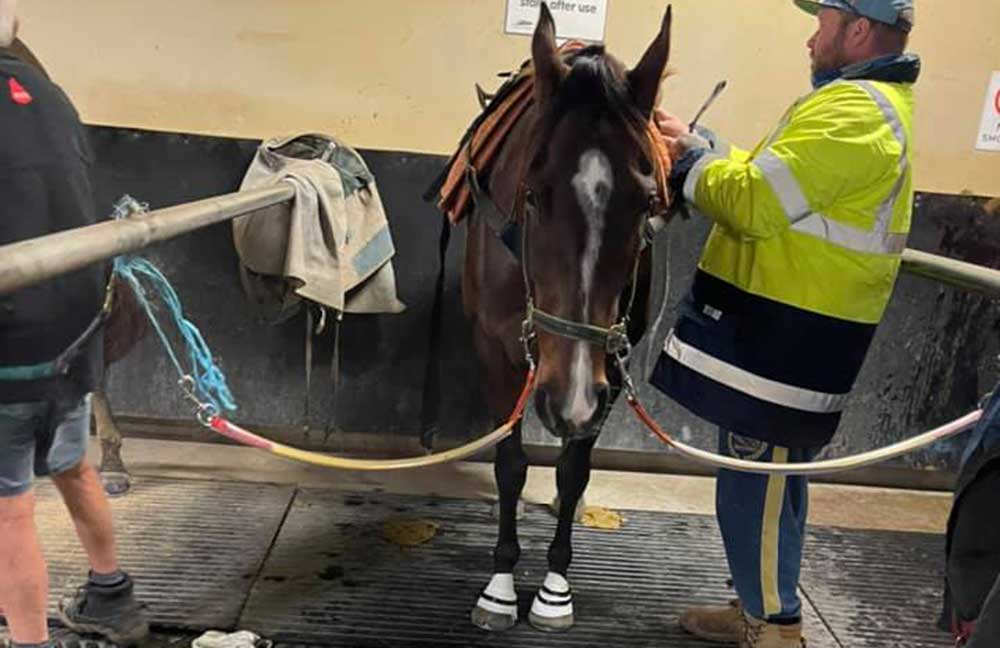
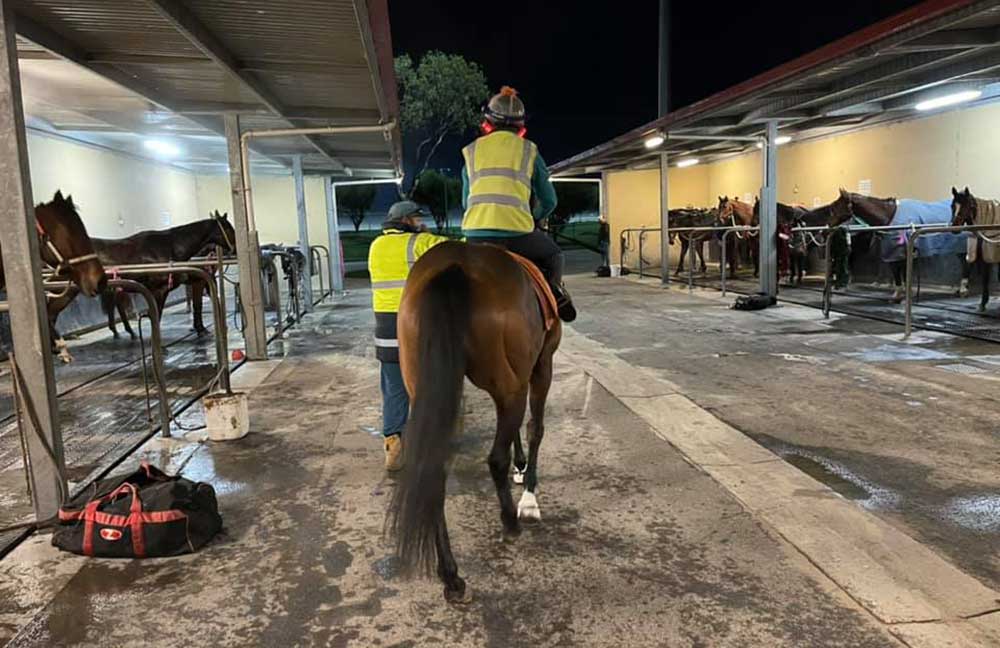
A note of gratitude is extended to Aaron Pateman, whose willingness to explore innovative horizons with FormaHoof not only embodies a forward-thinking approach but also substantiates a future where the wellness of horses is uplifted through technological advancements in hoof care. This journey with FormaHoof, especially with this mare, illuminates a promising future, where each step for our equine counterparts is a stride towards optimal health and performance.
Embracing FormaHoof
Horse owners, barefoot trimmers, farriers, and veterinarians exploring thoroughbred hoof care have a technologically advanced ally in FormaHoof. Whether it’s for active racehorses or retired thoroughbreds, FormaHoof manifests as a remarkable invention, ensuring each step taken is supported, protected, and propelling towards enhanced wellbeing. Navigating through the vast expanse of hoof care, specialists like Sven Targett see a future where equine athletes, regardless of their career stage, experience optimized foot health, aligning with a future that celebrates both their vitality and legacy.
Towards Hoof Wellness
Stepping into a future where every hoof-print tells a story of superior care and technological prowess, FormaHoof cordially invites you to be part of a transformative narrative for your cherished equine companion. 🐎
📞 Book a Personalized Consultation with Sven
Give your horse the bespoke attention they deserve. Sven, with his enriched experience and passion for holistic hoof care, is here to guide you through a personalized consultation, crafting a hoof care journey attuned to your horse’s unique needs.
📘 Free Introduction to FormaHoof
Dive into our comprehensive ‘FormaHoof Basics Lecture’ – an insightful, free introduction that unfolds the science and success behind our transformative hoof care technologies. Unlock the secrets to a pain-free, agile, and joyful equine life and let every trot be a testament to robust hoof health.
Be it thoroughbreds on the track or your cherished companions in the field, embracing innovative hoof care means stepping towards a future where every canter is comfortable, every gallop is pain-free, and every trot exudes vitality!

